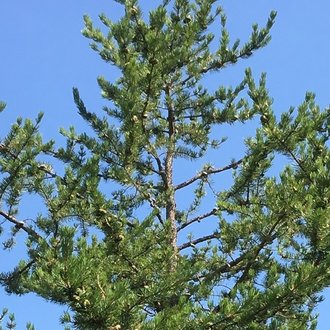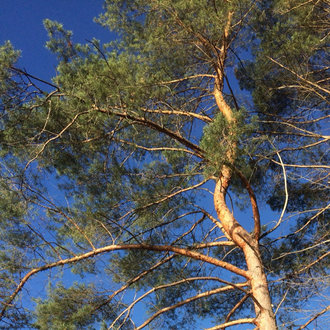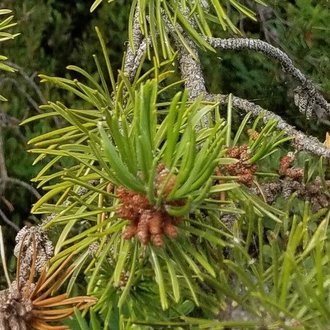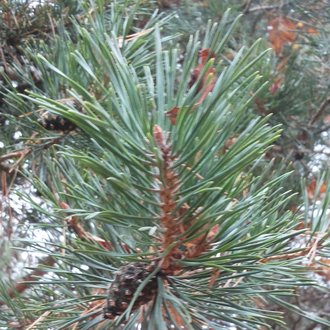Jack Pine vs Scots Pine
This guide is under construction and has not been published yet. It may have errors. When in doubt, double-check other sources for definitive ID.These two species of pine are quite similar to each other because of their small needles and often similar growth habit. They are easily distinguished by the color of their bark and foliage, and they have several more subtle differences as well.
Jack Pine (Pinus banksiana) | Scots Pine (Pinus sylvestris) |
A fire-adapted pine with a northerly distribution in North America, the densest parts of its range in Canada, northern New England, and the upper midwest. | A pine with short, blue-green needles and orange-red upper bark, native to northern Europe and Siberia, introduced in North America where it has become invasive in some regions. |
Bark color grayish, stays consistent at top of tree. Photo © ENR GNWT Suzanne Carriere, CC BY 4.0. | Orange-red bark, especially towards the top of the tree, and on young twigs. Photo © Charlie Hohn, CC BY 4.0. |
Needles variably bluish, green, or yellow-green. Not as consistently or intensely bluish. Photo © Sarah Johnson, CC BY 4.0. | Needles consistently bluish; makes bold contrast with orange twigs. Photo © Jordi M-R, CC BY 4.0. |
References & External Resources
These short lists show only links helpful for ID. For a complete list of references and resources also covering other aspects of ecology, visit the links section of the full article on each plant, which is the first entry here.






